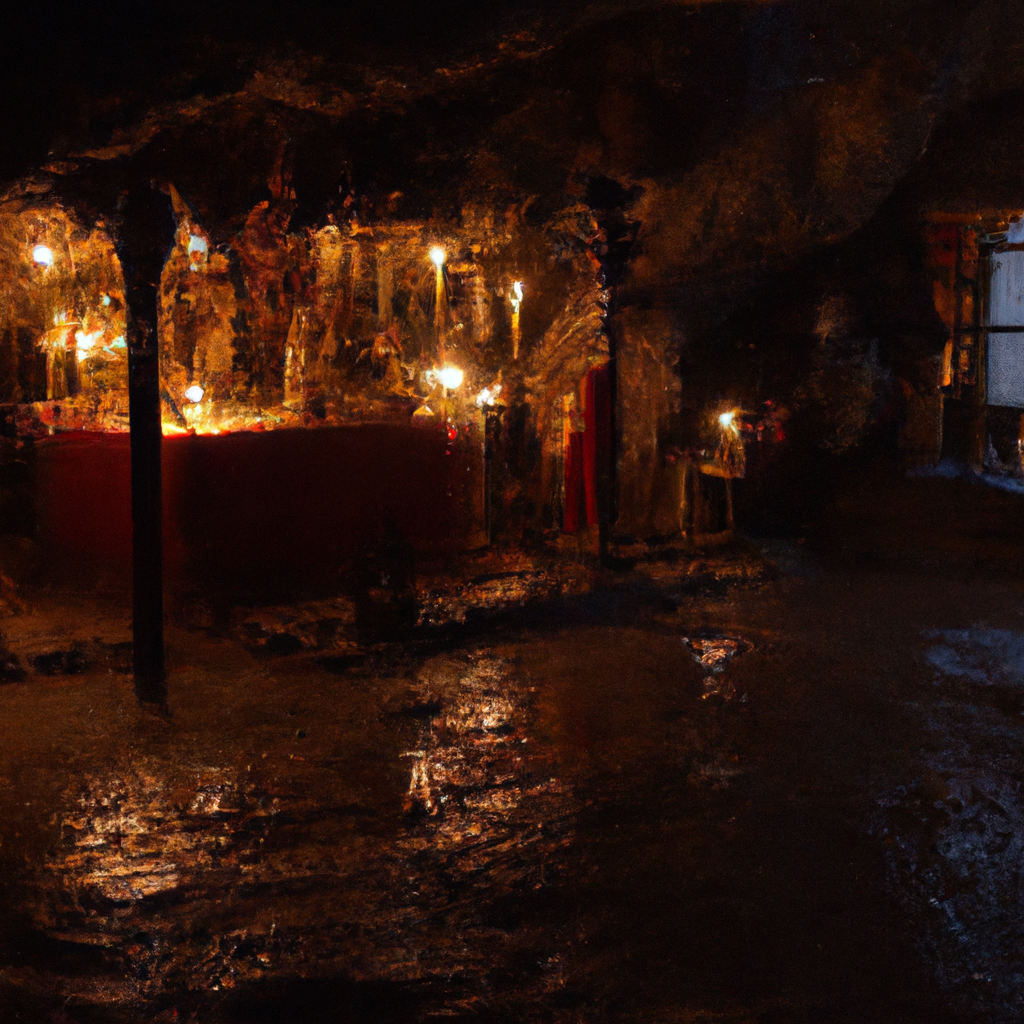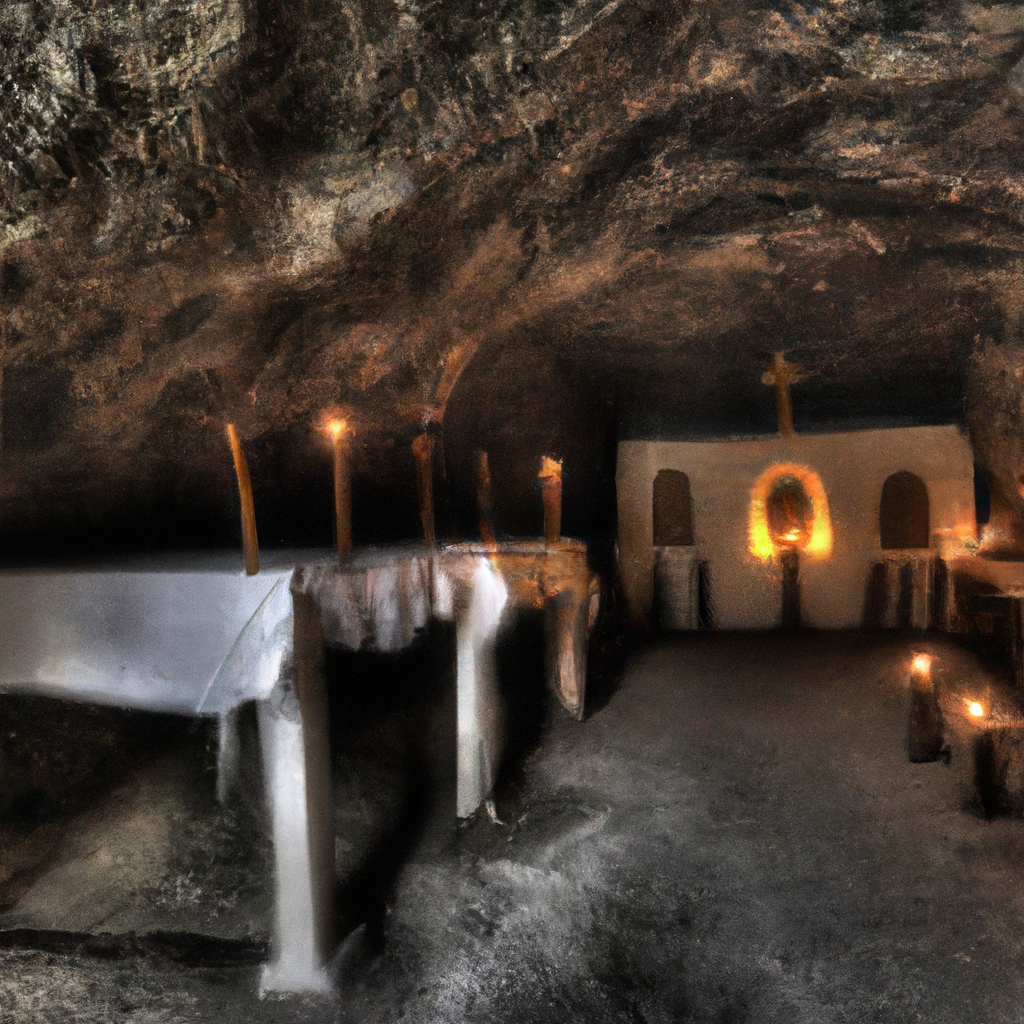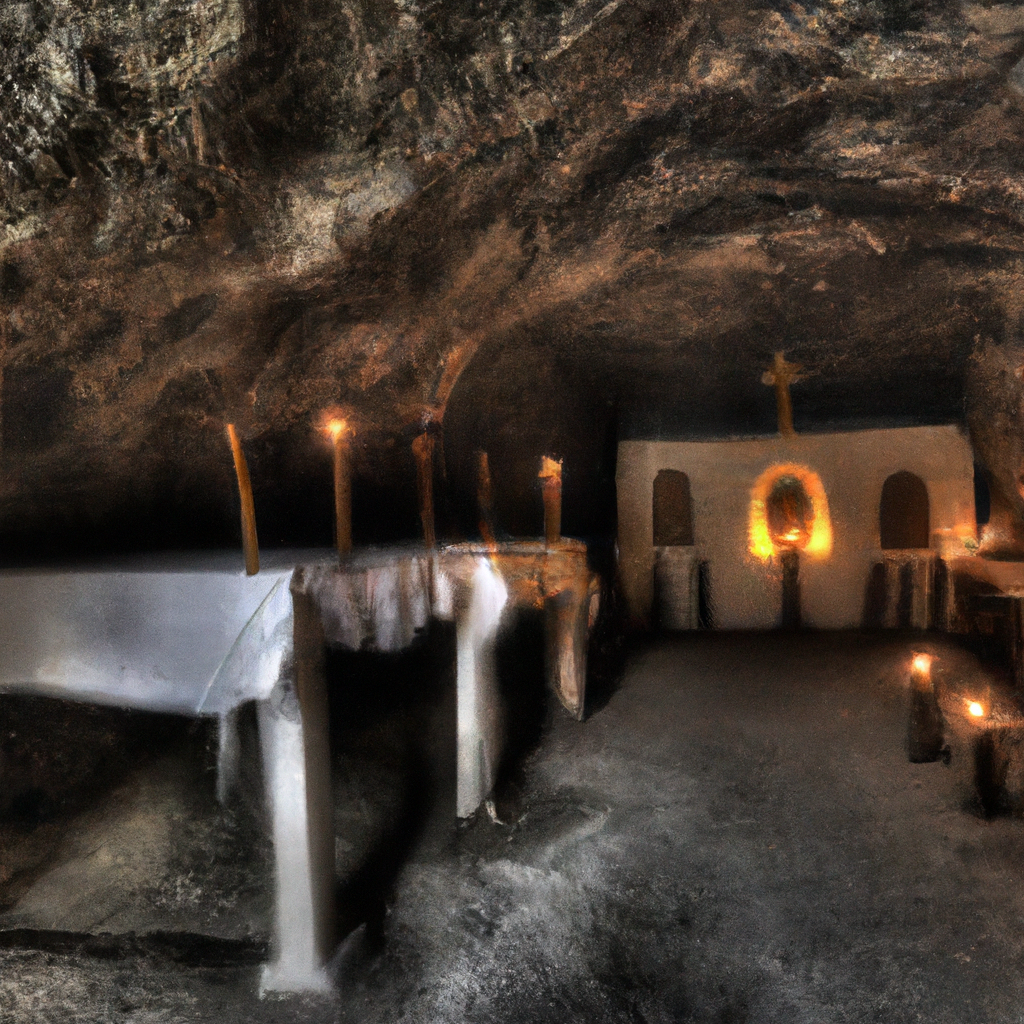Imagine stepping into a world of mystery and intrigue as you venture into the remarkable Cave of the Apocalypse on the picturesque Patmos Greek Islands. Surrounded by breathtaking natural beauty, this hidden gem holds a profound historical significance as the reputed place where the Book of Revelation was written. As you navigate the labyrinthine passages, you can’t help but feel a sense of awe and wonder at the secrets this cave holds, making it a must-visit destination for all curious explorers.
Ancient History of Patmos
Patmos, a small island located in the Aegean Sea, has a rich ancient history that dates back to the Neolithic period. The island’s early settlements can be traced back to the 3rd millennium BCE, with evidence of human habitation found in various archaeological sites. In the following centuries, Patmos became an important center of trade and commerce, attracting different civilizations and cultures.
Early Settlements
The early settlements on Patmos were predominantly agrarian, with the inhabitants relying on farming and animal husbandry for their livelihood. The island’s fertile soil and favorable climate provided an ideal environment for agriculture, allowing the residents to cultivate crops such as olives, grapes, and cereals. These early settlements laid the foundation for the later development of Patmos as an important cultural and religious center.
Importance in Greek Mythology
Patmos holds a significant place in Greek mythology, being associated with various legends and myths. According to one legend, the island was gifted to the goddess Artemis by her father Zeus as a sanctuary where she could find solace and tranquility. It is believed that Artemis, the goddess of the hunt, was especially fond of Patmos and would often retreat to the island to rest and rejuvenate. This divine connection established Patmos as a sacred place in the eyes of the ancient Greeks.
Island under Roman Rule
In the 2nd century BCE, Patmos came under Roman rule and experienced a period of prosperity and stability. The Romans recognized the strategic position of the island and used it as a base for their naval operations in the Aegean Sea. During this time, Patmos flourished both economically and culturally, with the construction of impressive buildings, including temples and public baths. The Roman influence on the island can still be seen in the architectural remnants and artifacts that have been discovered through archaeological excavations.
Discovering the Cave of the Apocalypse
One of the most fascinating attractions on Patmos is the Cave of the Apocalypse. This cave holds immense religious significance and is believed to be the place where St. John the Evangelist received the divine revelations that led to the writing of the Book of Revelation, the last book of the New Testament. The legend of St. John’s revelation has made the cave an important pilgrimage site for Christians from around the world, seeking to connect with the spiritual heritage of the early Christian Church.

Legend of St. John’s Revelation
According to the Christian tradition, St. John was exiled to Patmos by the Roman Emperor Domitian for his unwavering faith in Christ. It was during his exile on the island that St. John experienced a series of visions and revelations from God. These divine messages were later compiled into the Book of Revelation, which contains prophetic descriptions of the end times and the triumph of good over evil. The cave where St. John received these revelations has since become known as the Cave of the Apocalypse.
Religious Significance
The Cave of the Apocalypse holds great religious significance for Christians worldwide. It is considered a sacred place where the veil between heaven and earth is said to be thin, allowing believers to experience a deep spiritual connection. The cave’s association with St. John’s revelations adds to its mystique and draws pilgrims who come to pray, meditate, and seek inspiration. The aura of holiness and the power of the divine are palpable within the cave, creating a unique atmosphere of reverence and awe.
Archaeological Excavations
Over the years, extensive archaeological excavations have been conducted in and around the Cave of the Apocalypse, uncovering valuable artifacts and shedding light on its historical and religious significance. The excavations have revealed evidence of early Christian worship within the cave, including altars, candleholders, and inscriptions. These findings have provided valuable insights into the rituals and practices of the early Christian community and have deepened our understanding of the cave’s role in the spread of Christianity.
Geological Formation of the Cave
The Cave of the Apocalypse is a natural wonder with a fascinating geological formation. The cave is formed primarily of limestone, a sedimentary rock composed of ancient marine organisms. Over millions of years, the accumulation and compression of these organisms have resulted in the formation of sturdy limestone deposits. The limestone composition of the cave has contributed to its unique features and the formation of natural caverns and chambers within its interior.
Limestone Composition
Limestone is a porous rock that is susceptible to erosion by water and other natural forces. Over time, the continuous flow of water through the limestone formations of the cave has carved intricate patterns and shapes, creating a captivating underground landscape. The unique texture and coloration of the limestone add to the aesthetic appeal of the cave, as sunlight filtering through the cracks and crevices illuminates the interior with a soft, ethereal glow.

Natural Caverns and Chambers
The Cave of the Apocalypse is a complex network of interconnected caverns and chambers. These natural formations are the result of thousands of years of water erosion and the gradual dissolution of the limestone rock. As water trickles through the cracks and crevices, it gradually enlarges the existing cavities and carves out new pathways within the cave system. The resulting chambers provide visitors with a sense of awe and wonder as they navigate through the labyrinthine interiors.
Formation of the Cave Entrance
The entrance to the Cave of the Apocalypse is a marvel in itself. Over time, water erosion and other natural processes have shaped the cave’s entrance into a narrow, almost triangular opening. This unique formation gives the cave a mystical and otherworldly appearance, as if it were a portal to a hidden realm. As visitors approach the entrance, they are greeted by the cool, damp air emanating from the depths, adding to the sense of anticipation and discovery.
Exploring the Cave’s Interior
Stepping into the Cave of the Apocalypse is like entering a sacred sanctuary. The interior of the cave is divided into several areas, each with its own distinct characteristics and religious significance. The cave’s layout and architectural features provide a deeper understanding of St. John’s experience and offer a glimpse into the ancient rituals and traditions of early Christianity.
Entryway and Vestibule
Upon entering the cave, visitors find themselves in a narrow entryway. This transitional space serves as a symbolic gateway between the outside world and the sacred realm within the cave. The dim lighting and the solemn silence create a contemplative atmosphere, inviting visitors to pause and reflect before proceeding further.
The Central Cave Chamber
As visitors move deeper into the cave, they enter the central chamber, the heart of the Cave of the Apocalypse. This spacious chamber is where St. John is believed to have received his revelations from God. The natural acoustics of the chamber amplify whispers and soft prayers, enhancing the spiritual ambiance. The awe-inspiring beauty of the chamber, with its soaring ceiling and imposing stalactites, fills visitors with a sense of wonder and reverence.

Niche of St. John
Within the central chamber, a small niche is carved into the cave wall. This niche is believed to be the exact spot where St. John rested his head during his visions and revelations. It is considered a sacred space where visitors can pay homage to St. John and offer their prayers and supplications. The niche is adorned with offerings, including flowers and candles, left by pilgrims as tokens of their devotion and gratitude.
Religious Artifacts and Features
The Cave of the Apocalypse is adorned with various religious artifacts and features that amplify its spiritual atmosphere. These artifacts offer a glimpse into the devout reverence and admiration for St. John and his revelations.
Stone-Imprinted Icon of St. John
One of the most significant religious artifacts found within the cave is a stone-imprinted icon of St. John. This icon is believed to have been naturally imprinted on the cave wall, serving as a physical manifestation of St. John’s divine connection. Pilgrims from all walks of life come to witness this miraculous image and seek solace and guidance in their spiritual journey.
Altar and Candleholders
Within the central chamber, a stone altar stands as a focal point for religious ceremonies and devotional offerings. Pilgrims gather around the altar to pray, light candles, and offer their intentions to St. John. The flickering candlelight creates a serene and ethereal ambiance, adding to the mystical aura of the cave.
Wall Murals and Inscriptions
Throughout the cave, visitors can find ancient wall murals and inscriptions that depict scenes from St. John’s revelations and other biblical narratives. These artistic depictions provide a visual representation of the sacred texts and serve as a source of spiritual inspiration for the faithful. The ancient craftsmanship and attention to detail showcased in these murals are a testament to the profound religious significance of the cave.

Religious Rituals and Worship
The Cave of the Apocalypse is not only a place of pilgrimage but also a site of religious rituals and worship. Throughout the year, various events and ceremonies take place within the cave, bringing together believers from different denominations and cultures.
Pilgrimage to the Cave
Pilgrims from all over the world undertake a journey to the Cave of the Apocalypse, seeking spiritual solace and guidance. The pilgrimage involves a symbolic act of leaving behind the distractions and anxieties of everyday life and immersing oneself in prayer, reflection, and contemplation. The pilgrimage serves as a way to deepen one’s faith and forge a personal connection with St. John and his revelations.
The Feast Day of St. John
One of the most important religious events celebrated in the Cave of the Apocalypse is the Feast Day of St. John, held annually on May 8th. On this day, believers gather in the cave to participate in religious services, processions, and prayers dedicated to St. John. The atmosphere is filled with devotion and reverence as hymns and chants echo through the cavernous space, creating a powerful and deeply moving experience for all who are present.
Religious Processions and Services
Throughout the year, religious processions and services take place within the cave, bringing together the local community and visitors. These processions are marked by solemnity and devotion, as participants walk in reverent silence, carrying icons and candles, and reciting prayers. The collective act of worship within the cave strengthens the bonds of faith and highlights the importance of community in the spiritual journey.
Other Significant Caves on Patmos
While the Cave of the Apocalypse is the most well-known cave on Patmos, the island is also home to several other significant caves that have their own unique stories and characteristics.

The Cave of the Apocalypse
The Cave of the Apocalypse is undoubtedly the most famous cave on Patmos and holds immense religious significance. It stands as a testament to the early Christian faith and the enduring legacy of St. John the Evangelist.
The Grikos Cave
Located near the village of Grikos, the Grikos Cave is another notable cave on Patmos. This cave is renowned for its stunning stalactite formations and crystal-clear underground lake. The beauty and tranquility of the Grikos Cave have made it a popular destination for nature lovers and adventure seekers.
The Kastelia Caves
The Kastelia Caves, situated near the capital of Patmos, are a group of interconnected caves that offer breathtaking views of the surrounding landscape. These caves played a significant role in the island’s defensive strategies during ancient times, serving as watchtowers and shelters. Today, they provide visitors with a glimpse into the island’s past and offer a chance to explore the remnants of its ancient fortifications.
Visiting the Cave and Surrounding Area
Visiting the Cave of the Apocalypse and the surrounding area is an unforgettable experience for both pilgrims and tourists. The tranquil beauty of the island, combined with the spiritual atmosphere of the cave, creates a unique and captivating environment.
Access and Admission
Access to the Cave of the Apocalypse is relatively easy, with a well-maintained path leading to the entrance. Visitors can reach the cave by foot or via public transportation. The cave is open to visitors throughout the year, allowing people to experience its spiritual aura at their convenience.
Guided Tours and Information
To enhance the visit, guided tours and informational materials are available to provide a deeper understanding of the cave’s history and religious significance. Knowledgeable guides lead visitors through the cave, offering insights into St. John’s revelations and the ancient practices of early Christianity. These tours offer an opportunity to delve into the mysteries and hidden meanings of the cave.
Additional Points of Interest
While the Cave of the Apocalypse is the main attraction on Patmos, the island offers other points of interest that are worth exploring. The picturesque town of Chora, with its whitewashed houses and narrow winding streets, is a UNESCO World Heritage Site and provides a glimpse into the island’s architectural heritage. The Monastery of Saint John the Theologian, located near the cave, is another significant religious site that houses a remarkable collection of religious artifacts and manuscripts.
Preservation and Conservation Efforts
The preservation and conservation of the Cave of the Apocalypse and its surrounding area is of utmost importance to ensure its continued accessibility and protection for future generations.
Maintenance and Restoration
The responsible authorities, in collaboration with experts in conservation and archaeology, regularly conduct maintenance and restoration work to preserve the cave’s structural integrity and ensure a safe environment for visitors. This includes reinforcing the entrance and stabilizing the cave’s interior to prevent any potential damage caused by natural forces or increased tourism.
Impact of Tourism
The increasing popularity of the Cave of the Apocalypse as a tourist destination has presented challenges in balancing its preservation with the demands of tourism. Efforts are being made to establish sustainable tourism practices and regulate visitor numbers to minimize the impact on the cave’s fragile ecosystem and the island’s natural resources.
Collaboration with Religious Authorities
Preservation efforts are carried out in collaboration with religious authorities to ensure that the spiritual and religious significance of the cave is respected. The cooperation between archaeological and religious experts has resulted in the development of guidelines and protocols that strike a balance between the cave’s religious importance and its accessibility to visitors.
Conclusion
The Cave of the Apocalypse in Patmos Greek islands continues to be a place of reverence and mystery, attracting visitors from around the world. Its ancient history, religious significance, and awe-inspiring geological formation make it a unique destination for those seeking to delve into the mysteries of the past and connect with the profound spiritual heritage of humanity. By preserving and exploring this sacred site, we unlock the secrets of the Cave of the Apocalypse and ensure that its continued significance and reverence endure for future generations.
